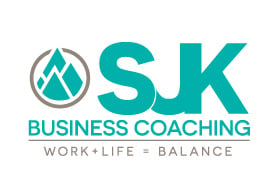As a coach, I speak with and evaluate leaders in a vast array of businesses. Some are extremely successful but choose to work with me for several reasons, usually both personal and business related. Others are typically seeking improvement; to move themselves and their companies from fair or good to great. Since it all starts at the top with the business owner/leader, here are just a few of the negative behaviors that I typically encounter. Maybe you can identify with some of these traits.
I often speak with people who are very enthusiastic with a constant flow of new ideas and initiatives but are struggling to achieve success with many of them. Great ideas can fail when a business leader has a lack of clarity, direction and execution which can radiate out to his team. Instead of taking the responsibility for leading a business with a clear vision, this type of leader tends to share responsibility with his managers who themselves are unclear on their own roles and responsibilities. While it looks like everyone is on the same page and working responsibly to help one another, they aren’t achieving results, meeting deadlines or able to be held accountable because none of the responsibilities have singular ownership. This type of behavior typically involves under-responsibility by the business owner and like all negative behaviors, with work, can be corrected.
Conversely, I often speak with people suffering from myopia – a lack of entrepreneurial spirit and personal engagement with the business. Myopic behavior occurs when a leader believes they are failing, no matter how successful their business. This can make the person feel uninspired, depressed, and anxious about the future of their business, which makes it impossible to plan for it. Like many business owners who experience myopia, a lack of vision can become a defense to protect against failure. Without expectations for a business, disappointment is easier to bear. So instead of feeling failure, the business owner operates in a constant state of dissatisfaction. This type of leader typically thinks that expansion and growth “may someday happen,” rather than take the proactive attitude of planning for growth.
And then there’s the fear-based owner, always worried about the worse-case scenario around the corner and with a serious difficulty dealing with risk. This person often has tried certain strategies to grow their business in the past and has failed. Each time, the experience became so painful that they had more and more trouble “getting back on the horse.” Often these people appear on the outside to be great at what they do, but on the inside, they are operating from fear and don’t want to deal with the anxiety and discomfort that sometimes are inevitable in growing a company. In other words, they don’t want to take unknown risks to make things better for their business and their people. They shy away from formal planning and leading. This includes procrastination and being paralyzed from making necessary changes like firing poor performing employees, taking calculated risks, or incorporating new systems—and this fear can create significant stagnation in any business.
Any of this sound familiar? If so, let’s talk. Any of these behaviors can be modified once you recognize them and if you’re willing to work at change.
Next time, I’ll address some other behaviors involving distraction, micromanagement, and over-responsibility.
Stephen


Recent Comments